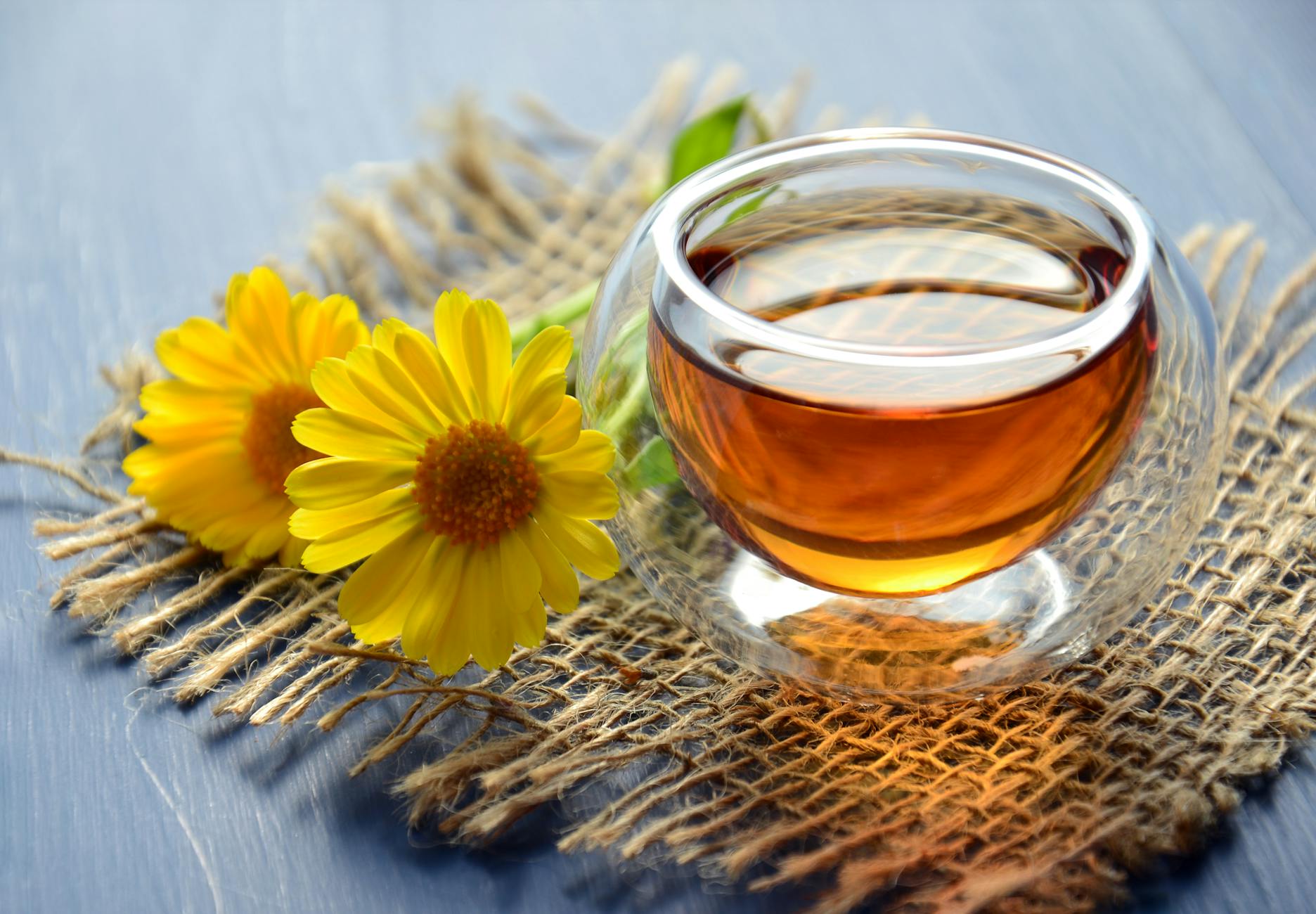Tea, a drink that has enchanted humanity for centuries, is more than just a beverage. It is a journey through culture, tradition, and history. Whether you are a seasoned tea aficionado or a curious newcomer, understanding the different types of tea can elevate your appreciation and enjoyment of this beloved drink.
Introduction to the World of Tea
Tea has a rich and diverse heritage, cultivated over millennia across various cultures. The essence of tea lies in its variety, each type offering a unique experience in flavor, aroma, and health benefits.
The Six Main Types of Tea
Tea is generally classified into six main types, all derived from the Camellia sinensis plant: Green, Black, Oolong, White, Yellow, and Pu-erh. Each type undergoes a distinct processing method that influences its flavor profile and health properties.
Green Tea
Green tea is renowned for its fresh, delicate flavor and numerous health benefits. It undergoes minimal oxidation, preserving its green color and potent antioxidants.
- Production Process: The leaves are quickly steamed or pan-fired after picking to halt oxidation, retaining their green hue and fresh taste.
- Flavor Profile: Green tea offers a range of flavors from grassy and vegetal to sweet and floral, depending on the variety and origin.
- Health Benefits: Rich in catechins, particularly EGCG, green tea is known for its potential to aid weight loss, enhance brain function, and reduce the risk of heart disease.
Black Tea
Black tea is fully oxidized, resulting in a robust flavor and dark color. It is one of the most widely consumed types of tea worldwide.
- Production Process: After withering, the leaves are rolled and fully oxidized, then dried, giving black tea its characteristic dark color and strong flavor.
- Flavor Profile: Black tea has a rich, full-bodied taste with notes of malt, fruit, and sometimes smokiness, varying by region and production method.
- Health Benefits: Black tea is packed with antioxidants like theaflavins and thearubigins, which may support heart health and improve gut health.
Oolong Tea
Oolong tea is partially oxidized, striking a balance between green and black tea. Its complexity in flavor and aroma makes it a favorite among tea connoisseurs.
- Production Process: Oolong tea leaves are withered, rolled, and partially oxidized before being dried. The degree of oxidation can vary widely, influencing the tea’s characteristics.
- Flavor Profile: Oolong offers a diverse range of flavors from floral and fruity to nutty and toasty, with a smooth and aromatic quality.
- Health Benefits: Oolong tea may aid in weight management, improve mental alertness, and support heart health due to its blend of catechins and flavonoids.
White Tea
White tea is the least processed of all tea types, known for its delicate flavor and subtle sweetness.
- Production Process: The young leaves and buds are simply plucked and allowed to wither and dry naturally, with minimal oxidation.
- Flavor Profile: White tea has a light, sweet, and floral taste, often described as delicate and refined.
- Health Benefits: High in antioxidants, white tea may help protect against cancer, reduce the risk of heart disease, and promote healthy skin.
Yellow Tea
Yellow tea is rare and highly prized for its unique production process and flavor.
- Production Process: Similar to green tea but with an additional step called “sealed yellowing,” where the leaves are lightly fermented, giving them a yellow hue and mellow taste.
- Flavor Profile: Yellow tea has a smooth, sweet, and slightly floral flavor, with a rich and full-bodied character.
- Health Benefits: It shares many of the antioxidant properties of green tea, potentially aiding in weight loss and improving overall health.
Pu-erh Tea
Pu-erh tea is a fermented and aged tea, known for its deep, earthy flavors and potential health benefits.
- Production Process: The leaves undergo microbial fermentation and aging, sometimes for several years, which enhances their flavor and health properties.
- Flavor Profile: Pu-erh tea has a bold, earthy taste with notes of wood and leather, often becoming smoother and more complex with age.
- Health Benefits: Pu-erh tea is believed to aid in digestion, lower cholesterol, and support weight loss.
Exploring Herbal Teas
Though not true teas, herbal teas are made from various plants, herbs, and spices, each offering unique flavors and health benefits. Popular herbal teas include chamomile, peppermint, and rooibos.
Chamomile Tea
Chamomile tea is known for its calming effects and mild, floral flavor.
- Production Process: Chamomile flowers are dried and steeped in hot water to make the tea.
- Flavor Profile: Chamomile tea has a light, apple-like taste with a gentle sweetness.
- Health Benefits: Chamomile tea is often used to promote relaxation, improve sleep, and aid digestion.
Peppermint Tea
Peppermint tea is refreshing and invigorating, with a strong minty flavor.
- Production Process: Peppermint leaves are dried and steeped in hot water to extract their flavor.
- Flavor Profile: Peppermint tea has a cool, menthol taste with a refreshing aftertaste.
- Health Benefits: It is commonly used to relieve digestive issues, reduce headaches, and improve respiratory function.
Rooibos Tea
Rooibos tea, also known as red bush tea, is a caffeine-free herbal tea from South Africa.
- Production Process: The leaves of the rooibos plant are oxidized and dried, resulting in a rich red color.
- Flavor Profile: Rooibos tea has a sweet, nutty flavor with hints of caramel and vanilla.
- Health Benefits: Rich in antioxidants, rooibos tea may support heart health, reduce inflammation, and promote skin health.
The Art of Tea Brewing
Brewing the perfect cup of tea is an art that involves precise temperature, timing, and technique.
General Brewing Tips
- Water Quality: Use fresh, filtered water to avoid impurities that can affect the taste.
- Temperature: Different teas require different water temperatures. For example, green tea should be brewed at around 175°F (80°C), while black tea requires boiling water (212°F or 100°C).
- Steeping Time: The steeping time varies by tea type. Green tea typically needs 2-3 minutes, while black tea can steep for 3-5 minutes. Oversteeping can lead to bitterness.
Specific Brewing Instructions
- Green Tea: Use water at 175°F (80°C) and steep for 2-3 minutes.
- Black Tea: Use boiling water and steep for 3-5 minutes.
- Oolong Tea: Use water at 185-205°F (85-96°C) and steep for 3-5 minutes.
- White Tea: Use water at 160-185°F (70-85°C) and steep for 4-5 minutes.
- Yellow Tea: Use water at 175-185°F (80-85°C) and steep for 3-4 minutes.
- Pu-erh Tea: Use boiling water and steep for 3-5 minutes, adjusting for preference.
Health Benefits of Tea
Tea is not just a delightful drink; it is also a powerhouse of health benefits. Each type of tea offers unique properties that can contribute to overall well-being.
Antioxidant Properties
Tea is rich in antioxidants, which help combat oxidative stress and protect cells from damage. Green tea, in particular, is high in catechins like EGCG, which have been extensively studied for their health benefits.
Heart Health
Regular consumption of tea, especially green and black tea, has been linked to improved heart health. The flavonoids in tea can help lower cholesterol levels, reduce blood pressure, and improve blood vessel function.
Weight Management
Green tea is often associated with weight loss due to its ability to boost metabolism and increase fat oxidation. The catechins and caffeine in green tea can aid in weight management when combined with a healthy diet and exercise.
Mental Alertness
The caffeine and L-theanine content in tea, particularly in green and black varieties, can improve mental alertness and cognitive function. These compounds work synergistically to enhance focus and reduce stress.
Digestive Health
Teas like peppermint and ginger are known for their digestive benefits. Peppermint tea can help relieve indigestion and bloating, while ginger tea is often used to alleviate nausea and improve digestion.
The Cultural Significance of Tea
Tea is more than just a drink; it is an integral part of many cultures around the world. From the Japanese tea ceremony to British afternoon tea, each culture has its unique traditions and rituals.
Japanese Tea Ceremony
The Japanese tea ceremony, or Chanoyu, is a ritualistic preparation and consumption of matcha, a powdered green tea. It is a meditative practice that emphasizes harmony, respect, purity, and tranquility.
Chinese Tea Culture
China, the birthplace of tea, has a rich tea culture that varies by region. The Gongfu tea ceremony is a traditional Chinese method of preparing tea, focusing on the skillful and mindful brewing of oolong tea.
British Afternoon Tea
Afternoon tea is a British tradition that dates back to the 19th century. It typically includes a selection of teas, accompanied by sandwiches, scones, and pastries, served in a leisurely and social setting.
Frequently Asked Questions (FAQs) About Tea
What is the best tea for weight loss?
Green tea is often considered the best tea for weight loss due to its high concentration of catechins, particularly EGCG, which can boost metabolism and increase fat burning.
How much caffeine is in tea?
The caffeine content in tea varies by type and preparation method. Generally, black tea contains the most caffeine, followed by oolong, green, and white tea. Herbal teas are usually caffeine-free.
Can tea improve skin health?
Yes, tea, particularly green and white tea, is rich in antioxidants that can help improve skin health. These antioxidants protect the skin from damage, reduce inflammation, and promote a healthy complexion.
Is it safe to drink tea during pregnancy?
While moderate consumption of tea is generally safe during pregnancy, it is important to monitor caffeine intake. Pregnant women should limit their caffeine consumption to 200-300 mg per day, which includes caffeine from all sources, not just tea.
How should tea be stored?
To maintain its freshness and flavor, tea should be stored in an airtight container, away from light, heat, and moisture. Proper storage can prolong the shelf life of tea and preserve its quality.
Wrapping Up
The world of tea is vast and diverse, offering a multitude of flavors, aromas, and health benefits. By understanding the different types of tea and their unique characteristics, you can enhance your tea-drinking experience and reap the many rewards that this ancient beverage has to offer. Whether you are savoring a delicate white tea, enjoying a robust black tea, or exploring the complexities of oolong, each cup of tea is a journey of discovery and delight.



